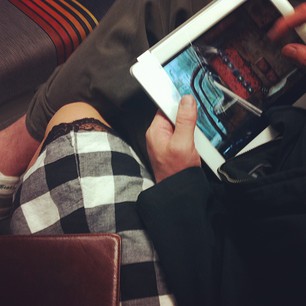
Remediation
Remediation:
A summary of research
Jay David Bolter and Richard Grusin, in their book Remediation: Understanding New Media, define remediation as “the process of representing one medium in another’” and they argue that this “is a defining characteristic of the new digital media”. The Cyberartsweb defines it as “that which appropriates the techniques, forms, and social significance of other media and attempts to rival or refashion them in the name of the real.” The premise is that all new media take over and re-use existing media and that the old media may change in response. The viewer is above all striving for immediacy, to experience directly, so that the mediation is invisible and they feel beyond mediation. Ironically, as the new medium matures it becomes less and less transparent and then it often morphs into a hypermedia form – a self-referential aspect of the media itself.
Examples of remediation
New media remediates old media by paying homage to, rivaling, and refashioning old media. Historically, Bolter and Grusin point out that “that earlier media have also refashioned one another: photography remediated painting, film remediated stage production and photography, and television remediated film, vaudeville, and radio.” The web, for example, presents all of the most pertinent information ‘above the fold’ (a term coined by newspaper) in the same way that newspapers do. Television news programs have changed substantially with the introduction of the computer – once a familiar picture of a heavy, spare desk behind which sat a middle-aged man who addressed the audience in an authoritative tone, now the news includes separate ‘windows’ of screen in imitation of the multi-tasking environment of the computer monitor. Films such as Toy Story are remediations with a long past: animated computer graphics draw upon the tradition of film and film is now starting to draw upon the new offerings of computer graphics. The effect of remediation on new and old media both can be strongly seen between the Internet and television: The Internet uses patterns established by television in order to determine how to appeal to viewers, and television uses new strategies of windowing images with the scrolling tickertapes and texts it has borrowed from Internet styles.
Remediation and the viewer
When speaking of the effects of remediation on the viewer or user, one must keep in mind the dual aspect of remediated culture: Transparency vs Hypermediation. This dual aspect is centered on the viewer’s desire for Immediacy, A style of visual presentation whose goal is to make the viewer forget the presence of the medium (canvas, photographic film, cinema, etc) and believe that she is in the presence of the objects of representation. Immediacy is a desire for a transparency in media that obliterates or lessens the perception of the media itself in the viewer’s mind. Cyberartsweb illustrates this principle: “The telephone offers the immediacy of the voice or the interchange of voices in real time. Television is a point-of-view technology that promises immediacy through its insistent real-time monitoring of the world. The computer’s promise of immediacy comes through the combination of three-dimensional graphics, automatic (programmed) action, and an interactivity that television cannot match.” All new media are at first embraced because there is the perception that the new media is superior to the old media forms in terms of delivering a more immediate, ‘real’ experience. Bolter and Grusin go on to explain the inevitable process of hypermediation: “Although each medium promises to reform its predecessors by offering a more immediate or authentic experience, the promise of reform inevitably leads us to become aware of the new medium as a medium. Thus, immediacy leads to hypermediacy.”
Important additional thoughts:
Media Convergence: Convergence is the mutual remediation of at least three important technologies–telephone, television, and computer — each of which is a hybrid of technical, social, and economic practice and each of which offers its own path to immediacy. As they come together, each of these technologies is trying to absorb the others and promote its own version of immediacy. (Bolter & Grushin)
Immediacy (historically): People treat new media as they have any new medium – First, they believe the new medium is truer, more accurate, more immediate than older ones, frequently emphasizing that they have advantages of power and truth over writing technologies. Second, new media in the form of visual technologies, such as computer graphics and the World Wide Web are doing exactly what their predecessors have done: presenting themselves as refashioned and improved versions of other media. (What is new about new media comes from the particular ways in which they refashion older media and the ways in which older media refashion themselves to answer the challenges of new media.)
Hypermedia: Unlike paper based texts, hypermedia facilities relations andconnections. (Semiotics Criteria)
Self: new media allows for a new vision of self and community.
New media in culture: Media have the same claim to reality as more tangible cultural artifacts; photographs, films, and computer applications are as real as airplanes and buildings. The World Wide Web is not merely a software protocol and text and data files. It is also the sum of the uses to which this protocol is now being put: for marketing and advertising, scholarship, personal expression, and so on. These uses are as much a part of the technology as the software itself. (Wiki)
Bibliography
The New Media Reader edited by Noah Wardrip-Fruin and Nick Montfort, 2003
Understanding new media @ Hunter College taught by Joseph Moore
http://www.understandingnewmedia.com/
Remediation: Understanding New Media by Jay David Bolter and Richard Grusin, 2005
Semiotic Criteria for Evaluating Instructional HyperMedia by Susan A. Tucker and John V. Dempsey
http://euphrates.wpunj.edu/faculty/yildizm/sp/b_abstract/SemioticCriteria.htm
From Internet to Gutenberg 1996 A lecture presented by Umberto Eco at Columbia University, The Italian Academy for Advanced Studies in America.
http://www.umbertoeco.com/en/from-internet-to-gutenberg-1996.html
Cyberarts/Cyberculture Research Initiative (CCRI), a course and research innovation at the University Scholars Programme at the National University of Singapore. headed by Irina Aristarkhova
http://www.cyberartsweb.org/ccri/index.html
(original: Sept. 8th 2011)
